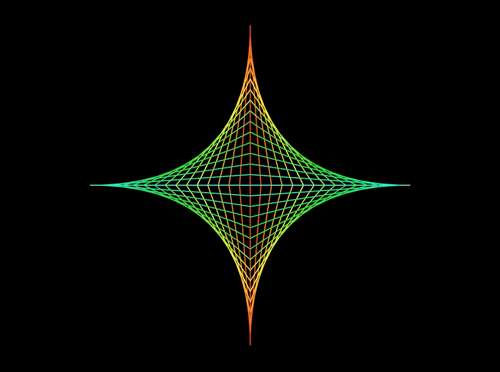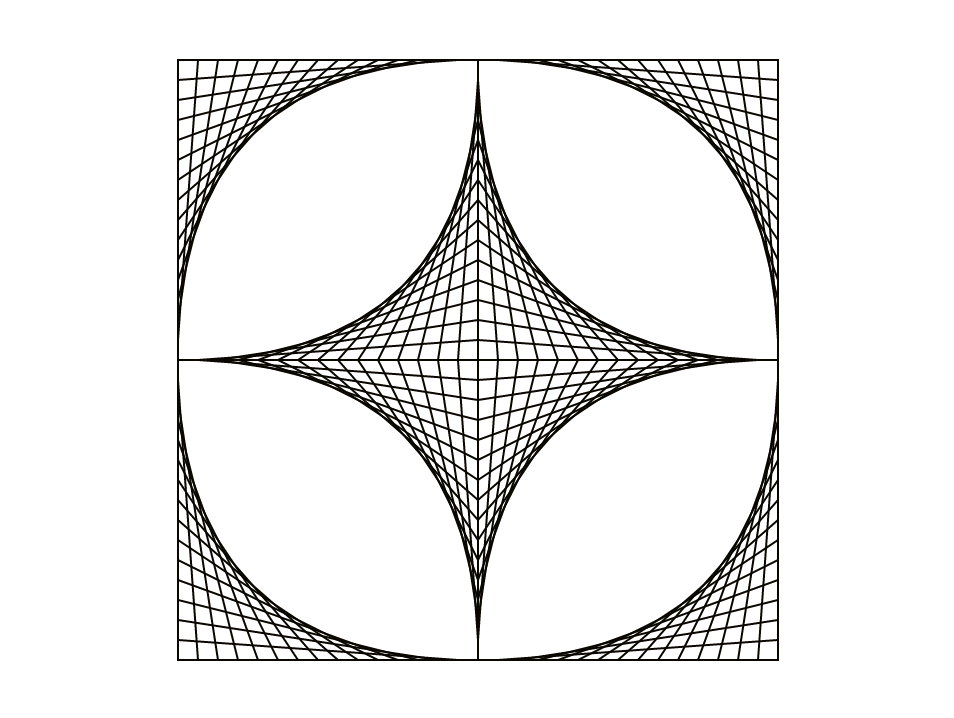

This design uses straight lines to make shapes that look curved and is sometimes sewn with thread or drawn on paper. Here are some examples of and variations on this design made with string, computers, pencils on paper, and even pencils glued together:
Below is a partial table of coordinates for the first quadrant of the design, showing which points on the y-axis are joined to which points on the x-axis.

| From (y-axis) | To (x-axis) |
|---|---|
| (0, 150) | (0, 0) |
| (0, 140) | (10, 0) |
| (0, 130) | (20, 0) |
| ... | ... |
| (0, 20) | (130, 0) |
| (0, 10) | (140, 0) |
| (0, 0) | (150, 0) |
Click for a suggestion about how to start in Snap!
for block:
